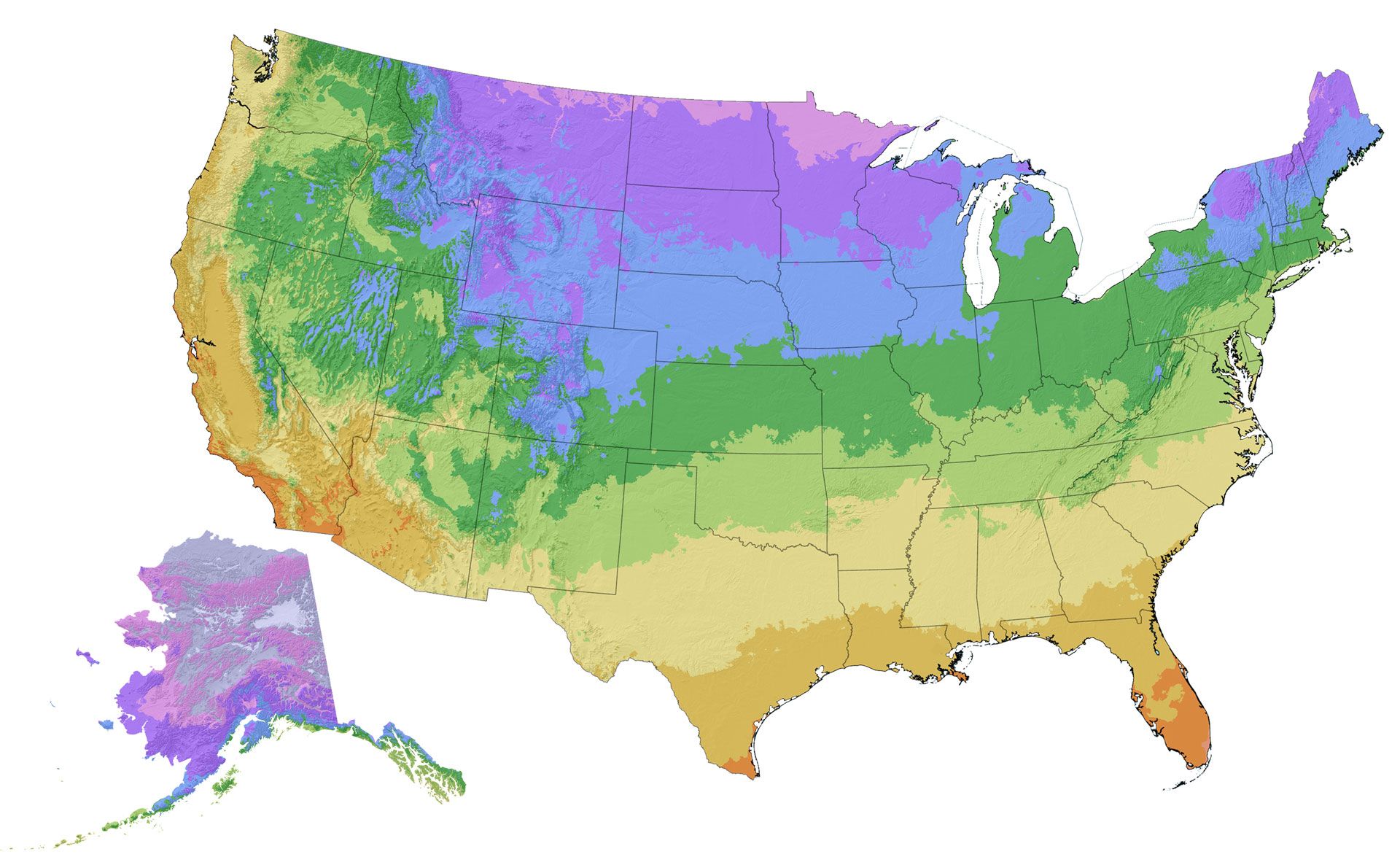3 Things to Know About Hardiness Zones

Image courtesy of the USDA
Most endeavors have a window of opportunity, and planting is no exception. Figuratively, every plant has a biological clock in it. Dormancy periods, chill hours and hardiness all contribute to the "how, when, where and why" regarding planting your fruit tree in the zone where you live.
I'm a man who grows plants and trees for a living and I can tell you that it’s often more like being a parent than a horticulturist!
It's all about completing tasks according to...
- the environment into which the tree is being placed,
- that planting window of opportunity, and
- what the tree needs.
Some of what I do as a horticulturist also applies to you, the fruit gardener.
1. Choose fruit trees that are recommended for the zone in which you live.


Make good choices regarding the fruit trees you plant — and be sure the recommended fruit tree hardiness zones for each variety include your zone!
This means you should...
- avoid planting trees that are recommended for colder zones, like 3-6, if you live down south, like Florida, where it's warm year-round. Many fruit trees require "chill hours" and a dormant resting period to bloom and be fruitful (although you can find a few more reasons a fruit tree doesn't bear fruit here).
- avoid planting trees that are not cold-hardy if you live up north with killing winters. For example, don't expect tropical or citrus trees to thrive being planted outdoors in Wisconsin; however, you can try planting fruit trees in containers instead, and moving these cold-sensitive trees in from the cold.
Our product descriptions and characteristics on our website and in our Hardiness Zone Finder will help you find the best fruit trees for your zone. This choice is an important one.
To find the best fruit trees for your hardiness zone:
- Go to any product page. [Example: Fruit Trees]
- Enter your zip code, where it requests one, to find what's recommended for your hardiness zone.
- All varieties recommended for your hardiness zone will be identified with a check-mark symbol: ✔

2. The "best time to plant" also depends on your hardiness zone.
Timing is key!

All hardiness zones vary slightly, meaning different environmental things occur at different times. When planting, it's always good to take advantage of cooler weather; it allows dormant trees to acclimate and wake up with nature. This type of weather reduces a tree's need for water and helps it get a less-stressful start. I won't discourage you from planting later in the spring/summer — when it's warmer — but rather promote getting better results by hitting the planting window of opportunity. The optimum beats average or marginal results, every time!
3. Make the best of your zone's native growing conditions.
Familiarize yourself with the "quirks and perqs" of your zone and plant accordingly!
For every hardiness zone, there are conditions you encounter with the site you choose to plant, which will have an effect on a fruit tree for the rest of its life. Get to know your planting zone so that you can address and avoid potential issues before they become problematic.
- Learn the importance of soil testing and understanding your soil before you plant in your zone.
- If your zone is known for cold winters, make sure you know how to winterize fruit trees for protection.
- If your zone has prolonged cold weather in the spring, learn how to acclimate new plants and trees.
- Also, discover ways you can delay planting when your order arrives here.
Finding that window of opportunity and making wise zone choices will help, no matter what zone we grow in!
— Elmer Kidd, Stark Bro's Chief Production Officer (retired)


What grows well where you live? Use our easy Hardiness Zone Finder to identify popular trees and plants that are compatible with your zone.


